N-(1-Cyclopenten-1-yl)morpholine
Synonym(s):4-(1-Cyclopenten-1-yl)morpholine
- CAS NO.:936-52-7
- Empirical Formula: C9H15NO
- Molecular Weight: 153.22
- MDL number: MFCD00006162
- EINECS: 213-316-0
- SAFETY DATA SHEET (SDS)
- Update Date: 2025-01-27 09:38:02
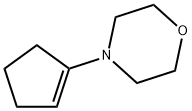
What is N-(1-Cyclopenten-1-yl)morpholine?
Chemical properties
clear yellow liquid
The Uses of N-(1-Cyclopenten-1-yl)morpholine
1-Morpholinocyclopentene is used as a reagent to synthesize cis- and trans-2-(3,4-dimethoxybenzyl)cyclopentylamine hydrochlorides, compounds that display antagonistic effects against dopamine-induced vasodepression.
Properties of N-(1-Cyclopenten-1-yl)morpholine
| Melting point: | 122-127 °C (decomp) |
| Boiling point: | 105-106 °C12 mm Hg(lit.) |
| Density | 0.957 g/mL at 25 °C(lit.) |
| refractive index | n |
| Flash point: | 140 °F |
| storage temp. | Inert atmosphere,2-8°C |
| form | clear liquid |
| pka | 6.32±0.20(Predicted) |
| Specific Gravity | 0.957 |
| color | Colorless to Light yellow to Light orange |
| BRN | 117154 |
| CAS DataBase Reference | 936-52-7(CAS DataBase Reference) |
| NIST Chemistry Reference | N-(1-Cyclopenten-1-yl)-morpholine(936-52-7) |
| EPA Substance Registry System | Morpholine, 4-(1-cyclopenten-1-yl)- (936-52-7) |
Safety information for N-(1-Cyclopenten-1-yl)morpholine
| Signal word | Warning |
| Pictogram(s) |
 Flame Flammables GHS02  Exclamation Mark Irritant GHS07 |
| GHS Hazard Statements |
H226:Flammable liquids H227:Flammable liquids H315:Skin corrosion/irritation H319:Serious eye damage/eye irritation H335:Specific target organ toxicity, single exposure;Respiratory tract irritation |
| Precautionary Statement Codes |
P210:Keep away from heat/sparks/open flames/hot surfaces. — No smoking. P233:Keep container tightly closed. P240:Ground/bond container and receiving equipment. P261:Avoid breathing dust/fume/gas/mist/vapours/spray. P280:Wear protective gloves/protective clothing/eye protection/face protection. P303+P361+P353:IF ON SKIN (or hair): Remove/Take off Immediately all contaminated clothing. Rinse SKIN with water/shower. P305+P351+P338:IF IN EYES: Rinse cautiously with water for several minutes. Remove contact lenses, if present and easy to do. Continuerinsing. P370+P378:In case of fire: Use … for extinction. P405:Store locked up. P403+P235:Store in a well-ventilated place. Keep cool. P501:Dispose of contents/container to..… |
Computed Descriptors for N-(1-Cyclopenten-1-yl)morpholine
New Products
3-Iodophenylacetic acid 3-Pyridineacetonitrile, α-hydroxy- 2-Propanamine, 1-chloro-, hydrochloride (9CI) 3-(hexyloxy)-4-(pyridin-3-yl)-1,2,5-thiadiazole 2-Hexyn-1-ol Dibenzo-18-crown-6 Nickel(II) perchlorate hexahydrate, 98% 4-Bromophenylacetonitrile, 95% 3-Bromo-4-fluoroaniline, 97% Sodium tetraborate decahydrate, 98% Palladium(II) acetate, trimer, Pd 99% 4-Bromo-2-chlorotoluene, 97% N N Dimethylformamide Dimethyl Acetal (Dmf Dma) 2,3-Dichloro Benzoyl Cyanide [Side Chain] Bis(2-Chloroethyl) Amine Hydrochloride L-Glutamic Acid Diethyl Ester Hydrochloride 5-(Difluoromethoxy)-2-Mercaptobenzimidazole 1-Ethyl-3-(3-Dimethylaminopropyl)-Carbodiimide Hydrochloride [EDC Hcl] 1,4-Napthoquinone Bromoiodomethane Sodium Bicarbonate Methylene Dichloride (MDC) Ethyl Acetate Indole-3-Carbinol (I3C)Related products of tetrahydrofuran
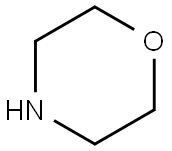

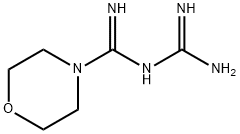
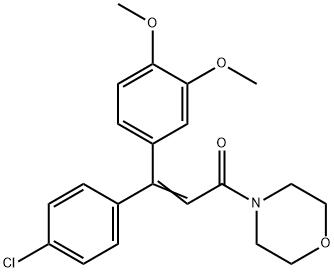



![2-[(Z)-(2-MORPHOLIN-4-YLCYCLOPENT-2-EN-1-YLIDENE)METHYL]-1H-BENZIMIDAZOLE](https://img.chemicalbook.in/StructureFile/ChemBookStructure8/GIF/CB4753335.gif)
You may like
-
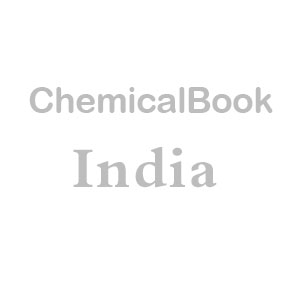 1-Morpholino-1-cyclopentene CAS 936-52-7View Details
1-Morpholino-1-cyclopentene CAS 936-52-7View Details
936-52-7 -
 17604-74-9 3-Pyridineacetonitrile, α-hydroxy- 98+View Details
17604-74-9 3-Pyridineacetonitrile, α-hydroxy- 98+View Details
17604-74-9 -
 131987-69-4 98+View Details
131987-69-4 98+View Details
131987-69-4 -
 Cyclohexane, (2-propynyloxy)- 67967-07-1 98+View Details
Cyclohexane, (2-propynyloxy)- 67967-07-1 98+View Details
67967-07-1 -
 764-60-3 2-Hexyn-1-ol 98+View Details
764-60-3 2-Hexyn-1-ol 98+View Details
764-60-3 -
 2-Propanamine, 1-chloro-, hydrochloride (9CI) 98+View Details
2-Propanamine, 1-chloro-, hydrochloride (9CI) 98+View Details
5968-21-8 -
 3-Iodophenylacetic acid 1878-69-9 98+View Details
3-Iodophenylacetic acid 1878-69-9 98+View Details
1878-69-9 -
 132945-75-6 (S)-1-Boc-3-methanesulfonyloxy-pyrrolidine 98+View Details
132945-75-6 (S)-1-Boc-3-methanesulfonyloxy-pyrrolidine 98+View Details
132945-75-6
Statement: All products displayed on this website are only used for non medical purposes such as industrial applications or scientific research, and cannot be used for clinical diagnosis or treatment of humans or animals. They are not medicinal or edible.
